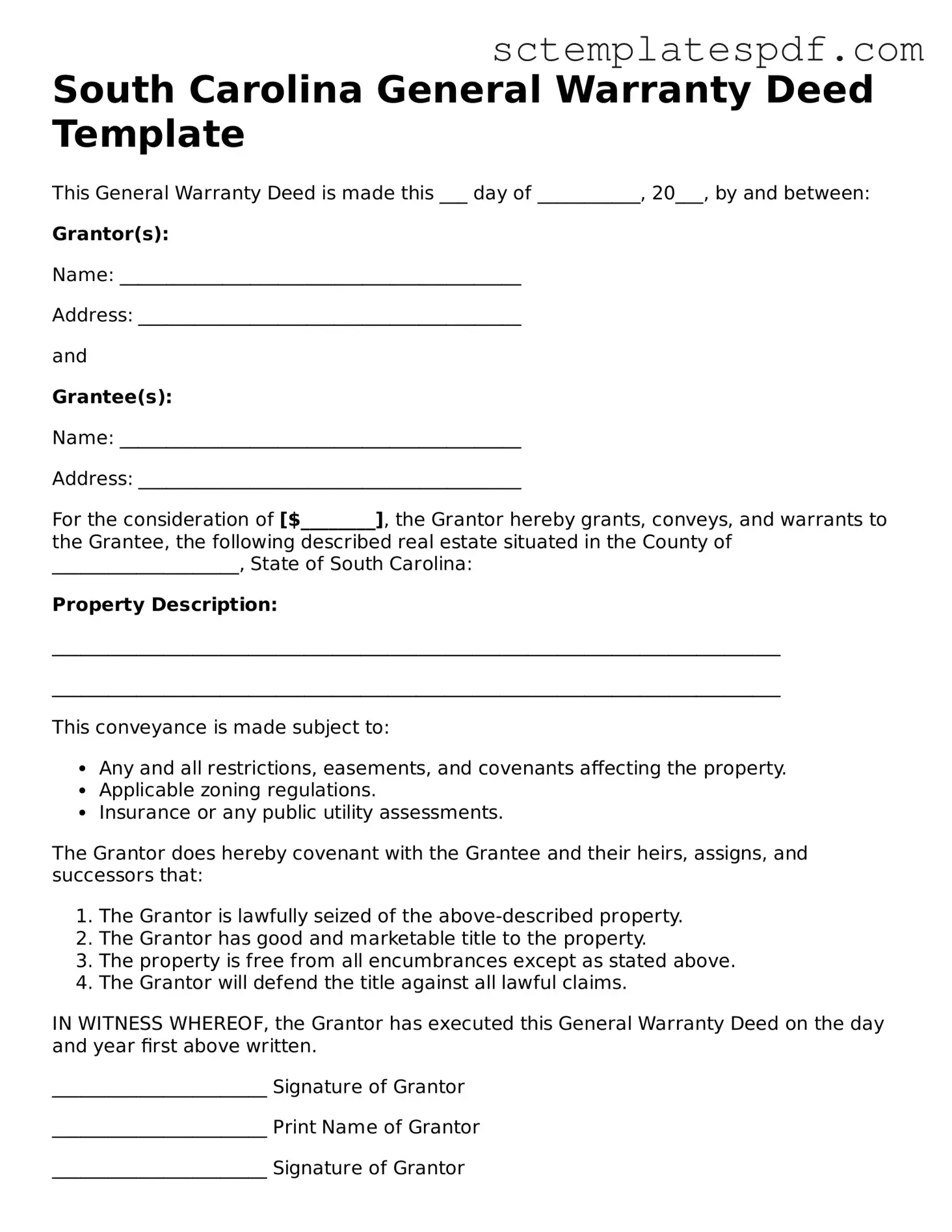The South Carolina Deed form serves as a crucial document in the transfer of real estate ownership within the state. It outlines the details of the transaction, including the names of the grantor and grantee, the legal description of the property, and the consideration or payment involved in the transfer. This form is essential for establishing clear title and ensuring that the rights of both parties are protected during the conveyance process. Various types of deeds, such as warranty deeds and quitclaim deeds, can be utilized depending on the nature of the transaction and the level of protection desired by the parties involved. Additionally, the form must be executed properly, which includes signatures and notarization, to ensure its validity. Understanding the components and requirements of the South Carolina Deed form is vital for anyone involved in real estate transactions, whether they are buyers, sellers, or real estate professionals.
